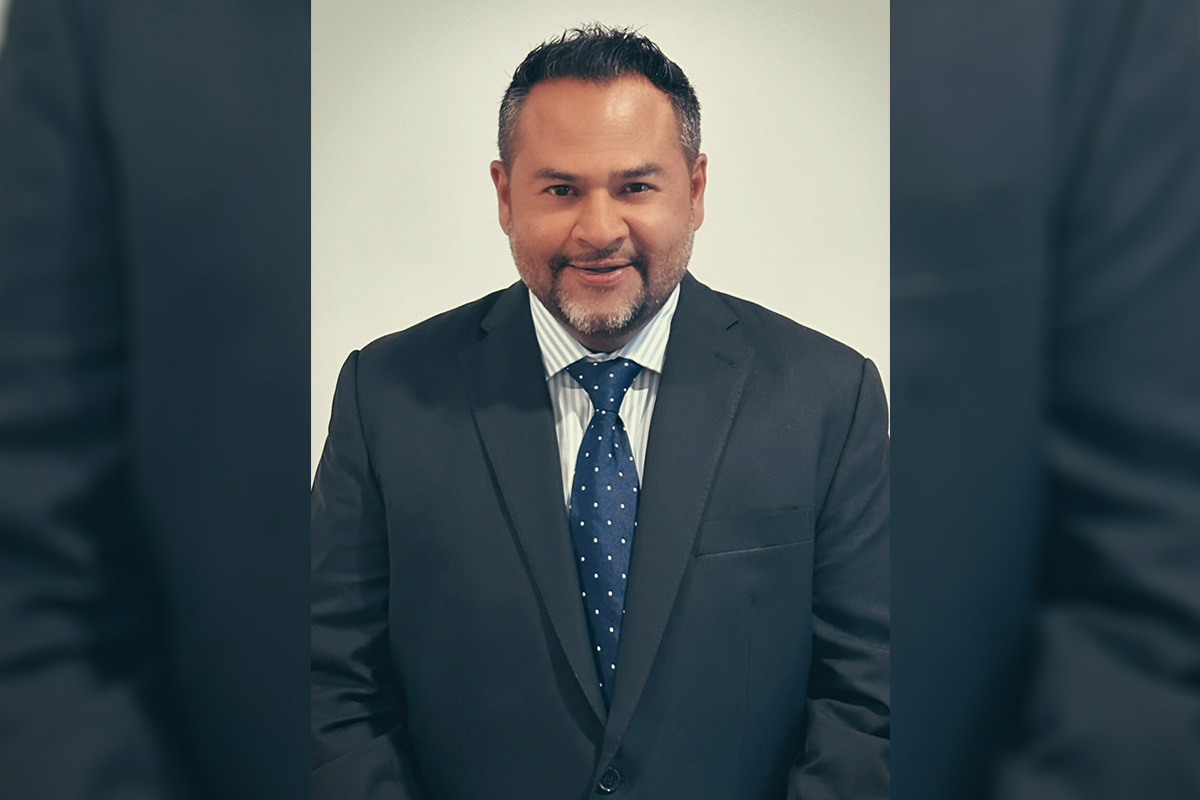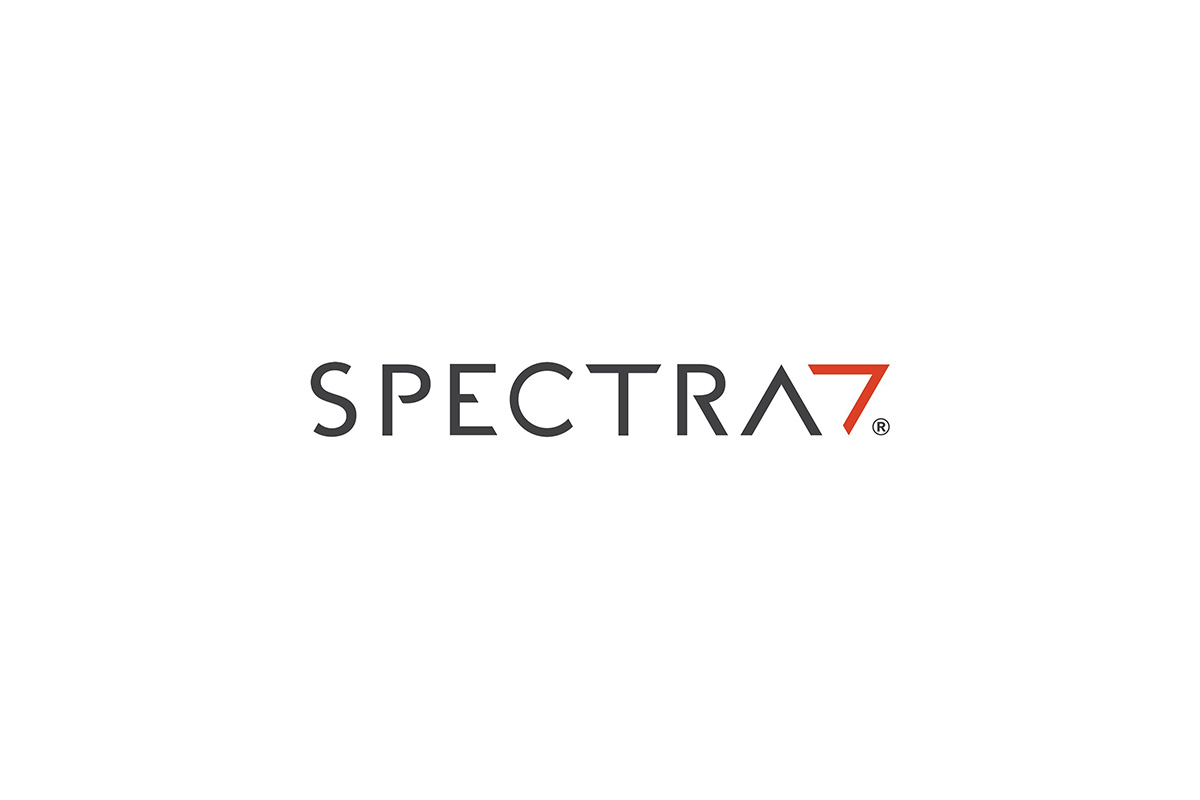S&P Global (NYSE: SPGI) today reported fourth-quarter and full-year 2022 results. The Company reported fourth quarter 2022 reported revenue of $2.94 billion, an increase of 41% compared to the same period in 2021.
Fourth quarter GAAP net income decreased 36% to $433 million and GAAP diluted earnings per share decreased 52% to $1.33 driven by continued declines in Ratings revenue and amortization of acquired intangibles.
Adjusted revenue decreased 6% compared to non-GAAP pro forma adjusted revenue from the fourth quarter of 2021, or 5% on a constant-currency basis. Adjusted net income for the fourth quarter decreased 13% to $827 million compared to non-GAAP pro forma adjusted net income and adjusted diluted earnings per share decreased 5% to $2.54 compared to non-GAAP pro forma adjusted diluted earnings per share primarily due to a challenging issuance environment continuing to weigh on Ratings revenue, partially offset by growth across the Company’s other core businesses, and prudent expense management.
For the full year, reported revenue increased 35% to $11.18 billion. 2022 GAAP net income increased 7% to $3.25 billion and GAAP diluted earnings per share decreased 18% to $10.20. Non-GAAP pro forma adjusted revenue decreased 4% compared to non-GAAP pro forma adjusted revenue from 2021, or 3% on a constant-currency basis. 2022 non-GAAP pro forma adjusted net income decreased 9% to $3.76 billion compared to non-GAAP pro forma adjusted net income and non-GAAP pro forma adjusted diluted earnings per share decreased 4% to $11.19 compared to non-GAAP pro forma adjusted earnings per share.
“During 2022 we began a new transformation of S&P Global through the merger with IHS Markit and our continued investment in growth and innovation,” said Douglas L. Peterson, President and Chief Executive Officer of S&P Global. He added, “Our people came together in every sense of the word, integrating through a historic merger, navigating through complex macroeconomic and geopolitical conditions, and positioning S&P Global to power global markets in a sustainable way for years to come.”
Important note on the presentation of financial results and guidance: GAAP financials and guidance are presented to reflect the close of the merger with IHS Markit, and the inclusion of its financial results, as of March 1, 2022. Adjusted financial information, including adjustments to pro forma GAAP financial information and guidance are presented on a pro forma basis as if the merger had closed on January 1, 2021, to facilitate year-over-year comparisons. Non-GAAP pro forma adjusted financials also exclude the contribution of divested businesses from all presented periods.
Profit Margin: For the full year, the Company’s reported operating profit margin decreased by 670 basis points to 44.2% and the non-GAAP pro forma adjusted operating profit margin decreased by 250 basis points to 44.9% in 2022 compared to non-GAAP pro forma adjusted operating profit margin primarily due to a decline in Ratings transaction revenue, as well as increases in technology, compensation, and strategic initiatives expenses. Margin impact was partially offset by lower incentive expenses and cost synergies.
Return of Capital: In 2022, the Company returned more than $13 billion to shareholders through a combination of $12 billion in the form of accelerated share repurchases (ASR) and $1 billion in cash dividends. The Company expects to launch a $500 million ASR in the coming weeks as part of its 2023 capital allocation plan. The Company also expects to utilize the net, after-tax proceeds following the divestiture of its Engineering Solutions division for share repurchases. The Board has authorized up to $3.3 billion in share repurchases in 2023.
Dividend: On January 25, 2023, the Board of Directors of S&P Global approved a dividend of $0.90 per share payable on March 10, 2023 to shareholders of record on February 24, 2023.
Upcoming Disclosures: Beginning with results in 2023, S&P Global plans to disclose new financial and operating metrics to help investors assess the performance of the Company. On a monthly basis, the Company expects to disclose the year-over-year growth rate in Billed Issuance for S&P Global Ratings, as well as the volume of Exchange-Traded Derivatives for S&P Dow Jones Indices. The Company expects these monthly disclosures to be posted to its investor relations website on or about the last business day of each month, one month in arrears (e.g., the end of February for January data). For the final month of each quarter, results are expected to be posted on the same date as the Company’s quarterly earnings. Additionally, beginning with the first quarter 2023 earnings results, the Company expects to disclose the Billed Issuance volumes, in dollars, for both investment-grade and high-yield issuance, as well as the revenue generated from vitality products, its climate and sustainability-related products, and its private markets-related products. We expect any such quarterly disclosures to be posted to our investor relations website along with the Company’s usual earnings results reporting.
Market Intelligence:
4th Quarter, 2022: Reported revenue increased 83% to $1,037 million in the fourth quarter primarily driven by the inclusion of IHS Markit revenue and increased 3% compared to pro forma revenue. Adjusted revenue increased 3% to $1,037 million in the fourth quarter of 2022 compared to non-GAAP pro forma adjusted revenue driven by Data & Advisory Solutions, partially offset by slower growth in Desktop and declines in Enterprise Solutions. Reported operating profit decreased 24% to $122 million from the prior year and by $520 million compared to the fourth quarter 2021 on a pro forma basis with operating profit margin decreasing 1,660 basis points to 11.8% due to the inclusion of IHS Markit. Adjusted operating profit increased 16% to $326 million compared to non-GAAP pro forma adjusted operating profit and adjusted operating profit margin improved 360 basis points to 31.4% compared to non-GAAP pro forma adjusted operating profit margin driven by the achievement of merger-related cost synergies.
Ratings:
4th Quarter, 2022: Reported revenue decreased 29% to $705 million. Transaction revenue decreased 51% to $249 million in the fourth quarter primarily due to decreases in issuance volumes. Non-transaction revenue decreased 6% to $456 million during the quarter primarily due to fees associated with Rating Evaluation Services and new-entity credit ratings, partially offset by growth in CRISIL.
Reported operating profit decreased 44% to $320 million from prior year and decreased 44% compared to pro forma operating profit. Operating profit margin decreased 1,270 basis points to 45.4%. Adjusted operating profit decreased 40% to $338 million compared to non-GAAP pro forma adjusted operating profit, and adjusted operating profit margin decreased 910 basis points to 48.0% in the quarter compared to non-GAAP pro forma adjusted operating profit margin, due primarily to declines in transaction revenue.
Commodity Insights:
4th Quarter, 2022: Reported revenue increased 70% to $451 million compared to prior year and increased 5% compared to pro forma revenue with growth in the core subscription business and increased Global Trading Services activity. Adjusted revenue increased 4% to $451 million in the fourth quarter of 2022 compared to non-GAAP pro forma adjusted revenue with positive growth in all categories, primarily Price Assessments and Energy & Resources Data & Insights, tempered by the impact of the Company’s suspension of commercial operations in Russia. Reported operating profit increased 13% to $150 million compared to prior year and decreased 2% to $150 million compared to pro forma operating profit, and operating profit margin decreased 1,670 basis points to 33.3% compared to prior year primarily due to the inclusion of IHS Markit. Adjusted operating profit increased 10% to $201 million compared to non-GAAP pro forma adjusted operating profit and adjusted operating profit margin increased 230 basis points to 44.6% compared to non-GAAP pro forma adjusted operating profit margin as adjusted expenses were held approximately flat year-over-year due to merger-related synergies, lower outside services spend, and lower advertising and promotion expense.
Mobility:
4th Quarter, 2022: Reported revenue was $345 million in the fourth quarter of 2022 and increased 10% compared to pro forma revenue. Adjusted revenue increased 9% to $345 million in the fourth quarter of 2022 compared to non-GAAP pro forma adjusted revenue with growth driven by strong and broad-based performance across Dealer, Manufacturing and Financials. Reported operating profit in the fourth quarter was $48 million and operating profit margin was 13.8%, and increased 14% compared to pro forma operating profit. Adjusted operating profit decreased 2% to $117 million compared to non-GAAP pro forma adjusted operating profit, and adjusted operating profit margin decreased 380 basis points to 34.0% compared to non-GAAP pro forma adjusted operating profit margin, driven by a year-over-year increase in expenses due to increased headcount, advertising spend, and cloud expenses.
S&P Dow Jones Indices:
S&P Dow Jones Indices LLC is a majority-owned subsidiary. The consolidated results are included in S&P Global’s income statement and the portion related to the 27% non-controlling interest is removed in net income attributable to non-controlling interests.
Year-end 2022 ETF AUM based on our indices decreased 12% from year-end 2021 to $2.6 trillion as a result of price depreciation, partially offset by continued positive fund inflows. Increased market volatility in 2022 led to higher revenue associated with exchange-traded derivatives compared to 2021.
4th Quarter, 2022: Reported revenue increased 14% to $344 million in the fourth quarter of 2022 and increased 4% compared to pro forma revenue. Adjusted revenue increased 4% to $344 million in the fourth quarter of 2022 compared to non-GAAP pro forma adjusted revenue driven primarily by Exchange-Traded Derivatives revenue, partially offset by a decline in Asset-Linked Fees.
Reported operating profit decreased 2% to $195 million and decreased 3% compared to pro forma operating profit. Operating profit margin decreased 900 basis points to 56.6% primarily due to one-time consulting spend. Operating profit attributable to the Company decreased 3% to $141 million. Adjusted operating profit increased 2% to $214 million compared to non-GAAP pro forma adjusted operating profit and adjusted operating profit margin decreased 140 basis points to 62.2% compared to non-GAAP pro forma adjusted operating profit margin due to high one-time outside services expenses and continued strategic investment during the quarter, partially offset by management actions and lower incentive compensation. Adjusted pro forma operating profit attributable to the Company increased 2% to $159 million.
Engineering Solutions:
4th Quarter, 2022: Reported revenue was $99 million in the fourth quarter of 2022 and decreased 3% compared to pro forma revenue. Adjusted revenue decreased 4% to $99 million in the fourth quarter of 2022 compared to non-GAAP pro forma adjusted revenue primarily due to the timing of the Boiler Pressure Vessel Code (BPVC) in Q3 2021. Reported operating profit in the fourth quarter of 2022 was $13 million and operating profit margin was 12.6%, and decreased 75% compared to pro forma operating profit. Adjusted operating profit decreased 34% to $15 million compared to non-GAAP pro forma adjusted operating profit, and adjusted operating profit margin decreased 700 basis points to 15.2% compared to non-GAAP pro forma adjusted operating profit margin due to planned investment spend, partially offset by favorable FX.
On November 30, 2022, S&P Global announced its intention to divest the Engineering Solutions business. On January 17, 2023, S&P Global announced it had entered into an agreement with KKR to sell the division for approximately $975 million (approximately $750 million in net, after-tax proceeds). The divestiture is expected to close by the end of the second quarter of 2023. Engineering Solutions is classified as “Held for Sale”, and its financial results will continue to be included in the Company’s consolidated results until the sale is complete.
Corporate Unallocated Expense:
4th Quarter, 2022: Reported Corporate Unallocated Expense of $137 million compares to $164 million of reported Corporate Unallocated Expense in the prior period, and $187 million of pro forma Corporate Unallocated Expense. Adjusted Corporate Unallocated Expense was $20 million in the fourth quarter of 2022 compared to non-GAAP pro forma adjusted Unallocated Expense of $58 million in the fourth quarter of 2021. Adjusted pro forma Corporate Unallocated Expense declined from a year ago, driven by a combination of synergies and reduced incentive costs.
2022: Reported Corporate Unallocated Expense of $989 million compares to $426 million of reported Corporate Unallocated Expense in the prior period, and pro forma Corporate Unallocated Expense of $655 million compares to $653 million of pro forma Corporate Unallocated Expense. Non-GAAP pro forma adjusted Corporate Unallocated Expense was $86 million compared to non-GAAP pro forma adjusted unallocated expense of $173 million.
Provision for Income Taxes: The Company’s effective tax rate increased to 20.5% in the fourth quarter of 2022 compared to 17.2% in the fourth quarter of 2021. The adjusted effective tax rates (excluding taxes in relation to earnings of unconsolidated subsidiaries) in the fourth quarter of 2022 and 2021 were 21.2% and 21.1%, respectively. The Company’s effective tax rate increased to 25.1% in 2022 compared to 21.6% in 2021. The non-GAAP pro forma adjusted effective tax rates (excluding taxes in relation to earnings of unconsolidated subsidiaries) in 2022 and 2021 were 20.8% and 22.1%, respectively.
Balance Sheet and Cash Flow: Cash, cash equivalents, and restricted cash at the end of 2022 were $1.3 billion. For full-year 2022, cash provided by operating activities was $2.6 billion. Free cash flow was $2.2 billion, a decrease of $1.1 billion from 2021 and non-GAAP pro forma adjusted free cash flow excluding certain items was $4.0 billion.
Outlook: We are not providing 2023 GAAP guidance because, given the inherent uncertainty around the timing of the divestiture of Engineering Solutions, management cannot reliably predict all of the necessary components of GAAP measures. The Company expects non-GAAP adjusted diluted EPS in the range of $12.35 to $12.55.
Comparison of Adjusted Information to U.S. GAAP Information: The Company reports its financial results in accordance with accounting principles generally accepted in the United States (“GAAP”). Company financial results are also presented on an as-reported basis, and on a pro forma basis as if the merger had closed on January 1, 2021, for periods including fiscal year 2021, the three months ended December 31, 2021 and twelve months ended December 31, 2022 and 2021; the pro forma basis agrees to the Company’s previously filed unaudited pro forma combined condensed financial information presented in accordance with Article 11 of Regulation S-X. The Company also refers to and presents certain additional non-GAAP financial measures, within the meaning of Regulation G under the Securities Exchange Act of 1934. These measures are: adjusted revenue and non-GAAP pro forma adjusted revenue; adjusted net income and non-GAAP pro forma adjusted net income; adjusted operating profit and margin and non-GAAP pro forma adjusted operating profit and margin; adjusted Corporate Unallocated Expense and non-GAAP pro forma adjusted Corporate Unallocated Expense; adjusted other expense (income), net and non-GAAP pro forma adjusted other expense (income), net; non-GAAP pro forma adjusted interest expense, net; adjusted provision for income taxes and non-GAAP pro forma adjusted provision for income taxes; adjusted effective tax rate and non-GAAP pro forma adjusted effective tax rate; adjusted income before taxes on income and non-GAAP pro forma adjusted income before taxes on income; adjusted net income attributable to noncontrolling interests and non-GAAP pro forma adjusted net income attributable to noncontrolling interests; adjusted diluted EPS, non-GAAP pro forma adjusted diluted EPS and non-GAAP adjusted diluted EPS guidance; adjusted net income attributable to SPGI and non-GAAP pro forma adjusted net income attributable to SPGI; free cash flow and non-GAAP pro forma adjusted free cash flow excluding certain items; adjusted Indices net operating profit and non-GAAP pro forma adjusted Indices net operating profit. The Company has included reconciliations of these non-GAAP financial measures to the most directly comparable financial measures calculated in accordance with GAAP on Exhibits 5, 6 and 7. Reconciliations of certain forward-looking non-GAAP financial measures to comparable GAAP measures are not available due to the challenges and impracticability with estimating some of the items. The Company is not able to provide reconciliations of such forward-looking non-GAAP financial measures because certain items required for such reconciliations are outside of the Company’s control and/or cannot be reasonably predicted. Because of those challenges, reconciliations of such forward-looking non-GAAP financial measures are not available without unreasonable effort.
The Company’s non-GAAP measures include adjustments that reflect how management views our businesses. The Company believes these non-GAAP financial measures provide useful supplemental information that, in the case of non-GAAP financial measures other than free cash flow and non-GAAP pro forma adjusted free cash flow excluding certain items, enables investors to better compare the Company’s performance across periods, and management also uses these measures internally to assess the operating performance of its business, to assess performance for employee compensation purposes and to decide how to allocate resources. The Company believes that the presentation of free cash flow and non-GAAP pro forma adjusted free cash flow excluding certain items allows investors to evaluate the cash generated from our underlying operations in a manner similar to the method used by management and that such measures are useful in evaluating the cash available to us to prepay debt, make strategic acquisitions and investments, and repurchase stock. However, investors should not consider any of these non-GAAP measures in isolation from, or as a substitute for, the financial information that the Company reports.
Conference Call/Webcast Details: The Company’s senior management will review the fourth quarter and full-year 2022 earnings results on a conference call scheduled for today, February 9, at 8:30 a.m. ET. Additional information presented on the conference call may be made available on the Company’s Investor Relations Website at http://investor.spglobal.com.
The Webcast will be available live and in replay at http://investor.spglobal.com/Quarterly-Earnings. (Please copy and paste URL into Web browser.)
Telephone access is available. U.S. participants may call (888) 603-9623; international participants may call +1 (630) 395-0220 (long-distance charges will apply). The passcode is “S&P Global” and the conference leader is Douglas Peterson. A recorded telephone replay will be available approximately two hours after the meeting concludes and will remain available until March 9, 2023. U.S. participants may call (866) 361-4937; international participants may call +1 (203) 369-0185 (long-distance charges will apply). No passcode is required.
Forward-Looking Statements: This press release contains “forward-looking statements,” as defined in the Private Securities Litigation Reform Act of 1995. These statements, including statements about the merger (the “Merger”) between a subsidiary of the Company and IHS Markit Ltd. (“IHS Markit”), which express management’s current views concerning future events, trends, contingencies or results, appear at various places in this report and use words like “anticipate,” “assume,” “believe,” “continue,” “estimate,” “expect,” “forecast,” “future,” “intend,” “plan,” “potential,” “predict,” “project,” “strategy,” “target” and similar terms, and future or conditional tense verbs like “could,” “may,” “might,” “should,” “will” and “would.” For example, management may use forward-looking statements when addressing topics such as: the outcome of contingencies; future actions by regulators; changes in the Company’s business strategies and methods of generating revenue; the development and performance of the Company’s services and products; the expected impact of acquisitions and dispositions; the Company’s effective tax rates; and the Company’s cost structure, dividend policy, cash flows or liquidity.
Forward-looking statements are subject to inherent risks and uncertainties. Factors that could cause actual results to differ materially from those expressed or implied in forward-looking statements include, among other things:
- worldwide economic, financial, political and regulatory conditions, and factors that contribute to uncertainty and volatility, natural and man-made disasters, civil unrest, pandemics (e.g., COVID-19), geopolitical uncertainty (including military conflict), and conditions that may result from legislative, regulatory, trade and policy changes;
- the volatility and health of debt, equity, commodities and energy markets, including credit quality and spreads, the level of liquidity and future debt issuances, demand for investment products that track indices and assessments and trading volumes of certain exchange-traded derivatives;
- the demand and market for credit ratings in and across the sectors and geographies where the Company operates;
- the Company’s ability to maintain adequate physical, technical and administrative safeguards to protect the security of confidential information and data, and the potential for a system or network disruption that results in regulatory penalties and remedial costs or improper disclosure of confidential information or data;
- the outcome of litigation, government and regulatory proceedings, investigations and inquiries;
- concerns in the marketplace affecting the Company’s credibility or otherwise affecting market perceptions of the integrity or utility of independent credit ratings, benchmarks, indices and other services;
- our ability to attract, incentivize and retain key employees, especially in a competitive business environment;
- the Company’s exposure to potential criminal sanctions or civil penalties for noncompliance with foreign and U.S. laws and regulations that are applicable in the jurisdictions in which it operates, including sanctions laws relating to countries such as Iran, Russia, Sudan, Syria and Venezuela, anti-corruption laws such as the U.S. Foreign Corrupt Practices Act and the U.K. Bribery Act of 2010, and local laws prohibiting corrupt payments to government officials, as well as import and export restrictions;
- the continuously evolving regulatory environment in Europe, the United States and elsewhere around the globe affecting each of our business divisions and the products our business divisions offer, and our compliance therewith;
- the ability of the Company to implement its plans, forecasts and other expectations with respect to IHS Markit’s business and realize expected synergies;
- business disruption following the Merger;
- the Company’s ability to meet expectations regarding the accounting and tax treatments of the Merger;
- the Company’s ability to make acquisitions and dispositions and successfully integrate the businesses we acquire;
- consolidation of the Company’s customers, suppliers or competitors;
- the introduction of competing products or technologies by other companies;
- the effect of competitive products and pricing, including the level of success of new product developments and global expansion;
- the impact of customer cost-cutting pressures;
- a decline in the demand for our products and services by our customers and other market participants;
- the ability of the Company, and its third-party service providers, to maintain adequate physical and technological infrastructure;
- the Company’s ability to successfully recover from a disaster or other business continuity problem, such as an earthquake, hurricane, flood, civil unrest, protests, military conflict, terrorist attack, outbreak of pandemic or contagious diseases, security breach, cyber attack, data breach, power loss, telecommunications failure or other natural or man-made event;
- the level of merger and acquisition activity in the United States and abroad;
- the level of the Company’s future cash flows and capital investments;
- the impact on the Company’s revenue and net income caused by fluctuations in foreign currency exchange rates; and
- the impact of changes in applicable tax or accounting requirements on the Company.
The factors noted above are not exhaustive. The Company and its subsidiaries operate in a dynamic business environment in which new risks emerge frequently. Accordingly, the Company cautions readers not to place undue reliance on any forward-looking statements, which speak only as of the dates on which they are made. The Company undertakes no obligation to update or revise any forward-looking statement to reflect events or circumstances arising after the date on which it is made, except as required by applicable law. Further information about the Company’s businesses, including information about factors that could materially affect its results of operations and financial condition, is contained in the Company’s filings with the SEC, including Item 1A, Risk Factors, in our most recently filed Annual Report on Form 10-K.




 . The cell to pack battery market growth is influenced by factors such as the increase in the electric vehicle sales equipped with high energy density, fast charging and light weight batteries. These batteries can reduce the overall weight of the electric vehicles and thereby increase the range with reduced charging time.
. The cell to pack battery market growth is influenced by factors such as the increase in the electric vehicle sales equipped with high energy density, fast charging and light weight batteries. These batteries can reduce the overall weight of the electric vehicles and thereby increase the range with reduced charging time.


 , a growth consulting and program management firm, is pleased to announce key addition to its senior leadership team with the appointment of
, a growth consulting and program management firm, is pleased to announce key addition to its senior leadership team with the appointment of 



